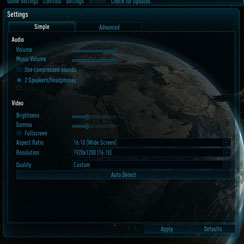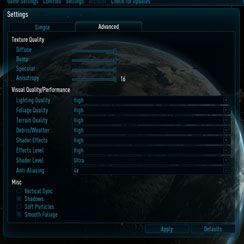Enemy Territory: Quake Wars
Publisher: ActivisionBuilt on an updated version of id Software's Doom 3 engine, Enemy Territory: Quake Wars is a team-based first person shooter that recently obtained the title of being the first game to use John Carmack's megatexture technology: a single texture that spans the entire map.
ET:QW also makes use of many vehicles and large open areas which means the action in view can get really intensive in this team based shooter. It's also the only game in this suite that utilises OpenGL instead of the pretty much industry-standard DirectX API. We used the full retail version of the game patched to version 1.1.
We recorded a timenetdemo that lasts for several minutes during an online game - this used lots of the different graphical effects to create what we've deemed to be a fairly typical slice of action to stress the system. We also created a custom autoexec file that enabled ultra high video settings, over and above that of the standard in game "high".
However, because of some display corruption on the Radeon HD 2900 XT, Radeon HD 2900 XT CrossFire and Radeon HD 2900 Pro configurations, we had to disable soft particles on all cards to give a fair apples-to-apples comparison. It’s worth bearing in mind that you’ll be able to turn this effect on with GeForce 8-series hardware.
Quake Wars also shows off some interesting performance characteristics for both the Radeon HD 3870 and the GeForce 8800 GT, whereby the GeForce 8800 GT smashes the HD 3870 when just 4xAA is applied, but then when you increase the load by applying 8xMSAA, there’s much less of a difference between the two.
At 1680x1050 4xAA, you will probably not be able to tell the difference between the Radeon HD 3870 and the GeForce 8800 GT, as the frame rates are around and above the 60 fps mark. However, when you increase the resolution to 1920x1200 4xAA, you’re more likely to be able to tell the difference between the two cards as you’re looking at frame rates in the mid-to-high fifties for the GeForce 8800 GT and mid-to-low forties for the Radeon HD 3870.
Things change quite dramatically once 8xAA is applied though and at 1680x1050, the Radeon HD 3870 manages to scrape out a narrow victory. Either Nvidia’s 8xAA algorithm isn’t particularly well-optimised (because of the company’s 8xCSAA mode that delivers better performance at slightly lower quality), or AMD’s RV670 chip makes better use of the bandwidth that it has at its disposal.

MSI MPG Velox 100R Chassis Review
October 14 2021 | 15:04











Want to comment? Please log in.